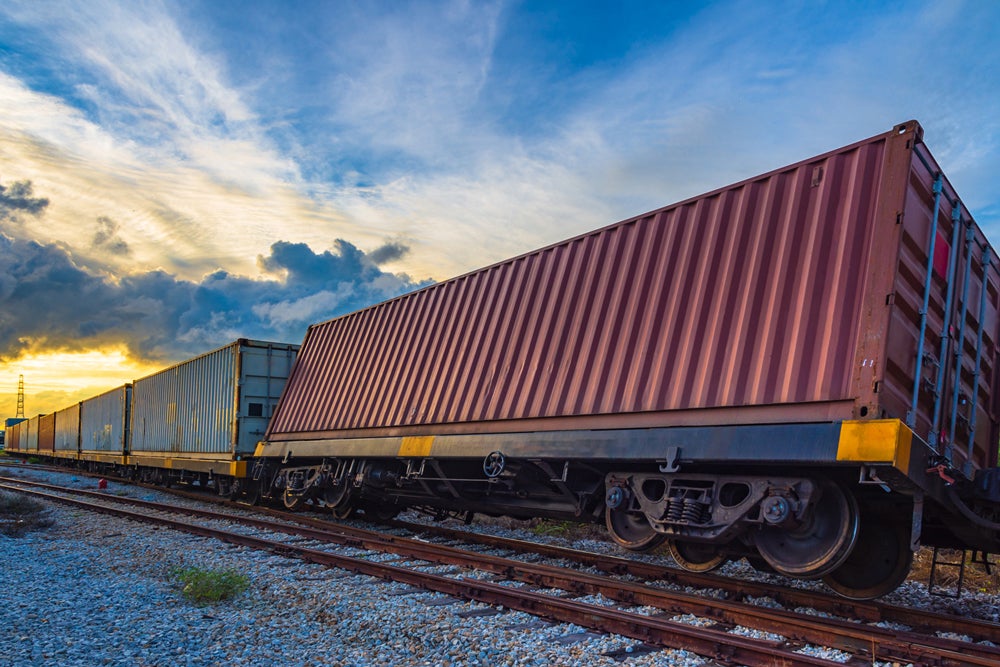
When disaster strikes, urgency is often a matter of utmost importance. To help aid the emergency response community in the US, the AskRail app was launched in 2014 to cover all North American Class I railroads. We analyse some of the most common barriers that might get in the way of a timely rail crisis response, and the most successful solutions on the market.
We also look at what lessons can be learned when it comes to the successful delivery of rail works, by reviewing rail regeneration projects such as Waterloo Station Redevelopment, Nottingham Station Remodelling and Derby Station Remodelling, nominated in a recent report as exemplary.
China’s vast high-speed network, by far the longest and most extensively used in the world, creates a compelling timeline of how it got to where it is today.
We also follow Noah’s Train, the new climate-minded mobile artwork, as it travelled through Vienna, Berlin, Paris and Brussels, while being painted on by local street artists, all for a good cause.
Finally, in the UK, National Rail is trialling new technology that will allow personalised travel information to come through Facebook Messenger, which made us ask: how close are we to devices which can reliably help us beat the crowds?
Read the edition in full here.
In this issue
How personal can personalised disruption messaging get?
In the UK, National Rail is trialing new technology that will allow personalised travel information to come through Facebook Messenger, pushing the boundaries of just how personal messaging can get. So how close are we to devices which can reliably help us beat the crowds, asks Patrick Kingsland.
Read the article here.
Effective emergency response in rail disasters
An effective, timely and organised emergency response service is of vital importance when it comes to rail disasters. For this reason, rail companies are investing in new technologies and communication services to make sure first responders are fully prepared to deal with the very worst. Adele Berti investigates.
Read the article here.
Nature strikes: mapping natural disasters on the world’s rail networks
Natural disasters are a society-wide issue, but their impact on rail networks can be pronounced. Whether it is flooding, earthquakes, wildfires or hurricanes, Adele Berti takes a look at the most serious natural events to hit rail networks around the world and the industry’s response to them.
Read the article here.
Waterloo and Derby: what can we learn from successful rail projects?
In response to the Williams Rail Review, the Civil Engineering Contractors Association (CECA) identified a handful of rail regeneration projects that achieved the perfect balance between cost, timeframe, passenger disruption and improved infrastructure. Julian Turner takes a closer look.
Read the article here.
Timeline: profiling the evolution of China’s high-speed rail network
By far the longest and most extensively used in the world, China’s vast high-speed network is set to grow even larger in the near future. With over 3,200km of high speed rail construction planned, the network will soon reach a total length beyond 30,000km. Adele Berti takes a look at how it all started and the most significant milestones the network has reached over the past 20 years.
Read the article here.
Shining example: will solar PV power the railways of the future?
How will our expanding railways be powered in the future? And are electrified networks powered solely by renewable energy the answer? Julian Turner reports on a groundbreaking project using solar panels fitted to tracks and innovations being trialled in India.
Read the article here.
In pictures: Noah’s Train, the new climate-minded mobile artwork
Noah’s Train, the longest mobile artwork in the world, visited major hubs in Europe earlier this year to promote sustainable transport and the much needed shift from road to rail freight. Adele Berti follows its trip across from Poland to Belgium and records the warm welcome it received at every station.
Read the article here.
London launch of Citymapper Pass raises data misuse concerns
Travel tech firm Citymapper has announced a London travel pass designed to rival the Oyster card. Dubbed the Citymapper Pass, it will act as a travel-specific alternative to an ordinary bank card for contactless travel. However, there are concerns about the company’s motives. Priya Kantaria reports.
Read the article here.
Next issue | May 2019
The early years of train technology where undoubtedly dominated by Britain and later by the United States. But is that still the case? We set out to find the players who are currently exporting the best rail technology around the globe.
We also take a look at Deutsche Bahn’s digital research train, which promises to “shorten the path from idea to reality” by putting technologies such as 5G, sensor and obstacle detection, as well as real-time train localisation to the test.
After the European Commission issued a formal notice to Spain that it is suspected of not meeting EU requirements for rail safety, we ask: is there something rotten at the core of Spanish rail accident investigations?
And finally, the Institution of Mechanical Engineers tells us why. and where, hydrail is a viable option for UK’s railways.



